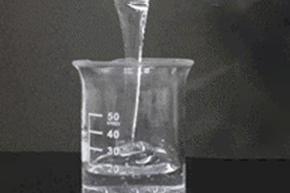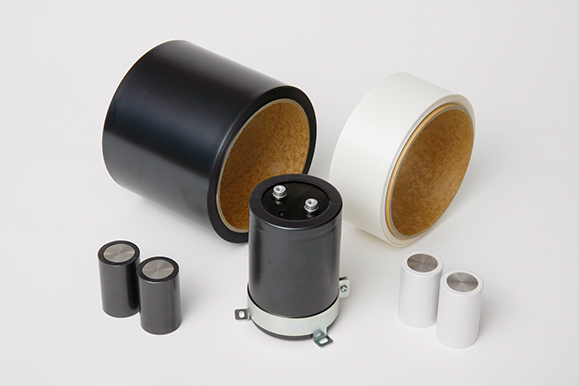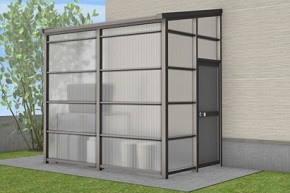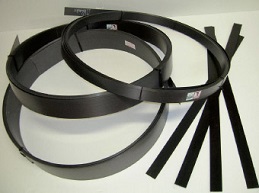Civil Engineering
324 products.
Filter by business area
[Close]
108 products.
[Close all]
High Purity Ethylene Carbonate
[Close]
High Purity Ethylene Carbonate. As ethylene carbonate is a highly polar solvent and dissolves large amount of electrolyte, it is mainly used in lithium batteries electrolyte solution. It can also readily dissolve polymers leading to use as a release agent and detergent. Our product is high quality with low impurity levels and low moisture. It has earned an excellent reputation for adherence to the strict quality standards demanded by our customers.
EINECS: No.202-510-0
Japan, Chemical Substances Control Law: METI-No. 5-523
Ethylene Carbonate
[Close]
As ethylene carbonate is a highly polar solvent and dissolves large amount of electrolyte, it is mainly used in lithium batteries electrolyte solution. It can also readily dissolve polymers leading to use as a release agent and detergent. Our product is high quality with low impurity levels and low moisture. It has earned an excellent reputation for adherence to the strict quality standards demanded by our customers.
EINECS: No.202-510-0
Japan, Chemical Substances Control Law: METI-No. 5-523
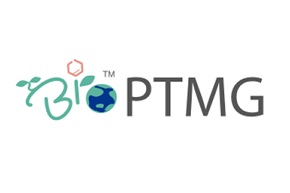
BioPTMG is a polyether polyol manufactured from plant-derived raw materials.
BioPTMG has the same performance as petroleum-derived PTMG as a raw material for polyurethane and polyester resins and has excellent impact, wear and hydrolysis resistance, flexibility at low temperatures, etc. Taking advantage of these characteristics, it can be used in a wide range of fields, from interior and fashion to industrial materials.
- Grades:
- BioPTMG650、BioPTMG1000、BioPTMG2000、BioPTMG3000
- Japan, Chemical Substances Control Law:
- (7)-129
- Japan, Poisonous and Deleterious Substances Control Law:
- Not applicable.
- Japan, Fire Services Law:
- Hazardous Material Class 4 Petroleums No.4 Hazardous Rank III(BioPTMG650)
Combustible Materials, Flammable Solids(BioPTMG1000, 2000, 3000)
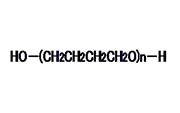
PTMG (Poly(tetramethylene ether)glycol / PTMG) is a linear polyether glycol with hydroxyl groups on both ends. As a polyol, it reacts readily with isocyanates (for example MDI, TDI), etc. to make resins with excellent properties.
- Grades:
- PTMG250、PTMG650、PTMG850、PTMG1000、PTMG1300、PTMG1500、PTMG1800、PTMG2000、PTMG3000、PTMG3200(developed grade in mass production)
- Japan, Chemical Substances Control Law:
- METI-No. 7-129
- Japan, Poisonous and Deleterious Substances Control Law:
- Not applicable.
- Japan, Fire Services Law:
- Hazardous Material Class 4 Petroleums No.3 Hazardous Rank III (PTMG250)
Hazardous Material Class 4 Petroleums No.4 Hazardous Rank III (PTMG650,850)
Combustible Materials, Flammable Solids (PTMG1000, 1300, 1500, 1800, 2000, 3000, 3200(developed grade in mass production))
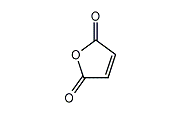
Maleic anhydride is produced by oxidation of benzene or a C4 hydrocarbon such as butane in the presence of a vanadium oxide catalyst. Maleic anhydride can be converted to maleic acid by hydrolysis and to esters by alcoholysis.
- EINECS: No. 203-571-6
- Japan, Chemical Substances Control Law: METI-No. 2-1101
- Japan, Industrial Safety and Health Law: Dangerous Goods and Toxic Substances Whose Names Should be Labeled and be Notified Appended Table 2-1978
- Japan, Poisonous and Deleterious Substances Control Law: Not applicable.
- Japan, Fire Services Law: Not applicable.
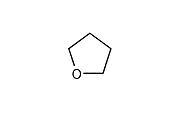
THF (Tetrahydrofuran) is a stable compound with relatively low boiling point and excellent solvency. It is widely-used for dissolution and reaction of various substances. Also it is used as a starting material for the synthesis of poly(tetramethylene ether) glycol (PTMG), etc. Since 1982, Mitsubishi Chemical's Tokai plant has produced high-purity, high-quality THF from butadiene using our proprietary technology.
- EINECS: No. 203-726-8
- Japan, Chemical Substances Control Law: METI-No. 5-53
- Japan, Industrial Safety and Health Law: No. 5-53
- Japan, Industrial Safety and Health Law: Dangerous Goods and Toxic Substances Whose Names Should be Labeled and be Notified Appended Table 2-1278
- Japan, Poisonous and Deleterious Substances Control Law: Not applicable.
- Japan, Fire Services Law: Hazardous Material Class 4 Petroleums No.1 (water-soluble liquid). Hazardous Rank II
- U.N. Class: 3
- U.N. No.: UN2056
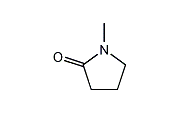
NMP (N-Methyl-2-Pyrrolidone) is a polar solvent with outstanding characteristics. It has a wide range of applications because it offers very high solvency, high boiling point, low freezing point, and ease of handling.
- EINECS: No. 212-828-1
- Japan Chemical Substances Control Law: METI-No. 5-113
- Japan, Industrial Safety and Health Law: No. 8-1-1014
- Japan, Industrial Safety and Health Law: Dangerous Goods and Toxic Substances Whose Names Should be Labeled and be Notified Appended Table 2-2108
- Japan, Poisonous and Deleterious Substances Control Law: Not applicable.
- Japan, Fire Services Law: Hazardous material Class 4 Petroleums No.3 (water-soluble liquid).
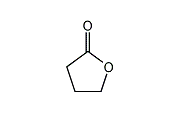
GBL has a wide range of practical applications because of its low freezing point, high boiling point, and a unique combination of solvent and electrical properties. It has applications as a solvent for special resins, in photography, in batteries, and as an electrolyte. Also a number of derivatives are synthesized from GBL.
- EINECS: No. 202-509-5
- Japan Chemical Substances Control Law: METI-No. 5-3337
- Japan, Industrial Safety and Health Law: No. 5-3337
- Japan, Industrial Safety and Health Law: Dangerous Goods and Toxic Substances Whose Names Should be Labeled and be Notified Appended Table 2-412
- Japan, Poisonous and Deleterious Substances Control Law: Not applicable.
- Japan, Fire Services Law: Hazardous material Class 4 Petroleums No.3 (water-soluble liquid).Aprotic, polar solvent.
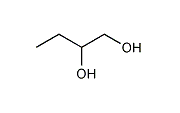
12BG (1,2-butanediol) is a branched glycol that has a primary hydroxyl group and a secondary hydroxyl group on adjacent carbon atoms. Mitsubishi Chemical Corporation offers two grades of purity. Both can be reacted with a dicarboxylic acid (e.g., phthalic acid or adipic acid) for use as a polyester polyol or a plasticizer, or reacted with an unsaturated dicarboxylic acid (e.g., maleic anhydride) for use as a raw material for unsaturated polyester resin. The high-purity grade 12BG is suitable for use as a solvent for inks and as a raw material for surfactants.
- EINECS: No. 209-527-2
- Chemical Substance Control Law (CSCL): METI-No. 2-235
- Japan, Industrial Safety and Health Act (ISHA): No. 2-235
- Japan, Poisonous and Deleterious Substances Control Act: Not applicable.
- Japan, Fire Service Act:Hazardous Materials, Category IV—Class III petroleums (water soluble liquids)
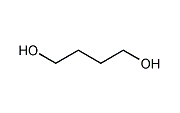
14BG (1,4-Butanediol) is a straight chain glycol with hydroxyl groups on both ends. It is used as a raw material for high performance polyester and polyurethane resins as well as for industrial chemicals like tetrahydrofuran and gamma-butyrolactone. Since 1982, Mitsubishi Chemical's Tokai plant has produced high-purity, high-quality 14BG from butadiene using our proprietary technology.
- EINECS: No. 203-786-5
- Japan, Chemical Substances Control Law: METI-No. 2-235
- Japan, Industrial Safety and Health Law: No. 2-235
- Japan, Poisonous and Deleterious Substances Control Law: Not applicable.
- Japan, Fire Services Law: Hazardous material Class 4 Petroleums No.3 (water-soluble liquid).
Polycarbonatediol, BENEBiOL™
[Close]
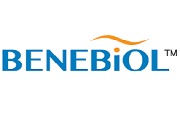
Polycarbonatediol(PCD) is a linear polycarbonate with hydroxyl groups at both ends. It easily reacts with isocyanate compounds(e.g. MDI, TDI, IPDI, H12MDI), and generates polymers with characteristics such as durability and chemical/hydrolysis resistance. BENEBiOL™ is the biomass-based PCD developed by our proprietary manufacturing technology. Because of “key monomer“ of each grade, polyurethane resins based on BENEBiOL™ will show an outstanding property level with regard to flexibility and chemical/stain resistance for example, in addition to the characteristics of conventional PCD. Besides, your product will be equipped with unique touch and feeling.Biomass-based polycarbonatediol with superior characteristics
Characteristics of polyurethane resins based on BENEBiOL™
non-edible raw material is used for some grades
transparency, stain resistance, chemical resistance, durability, toughness, weather resistance
flexibility, soft feel and touch, high hardness, good fit
FORZEAS™ is a compounding resin developed by Mitsubishi Chemical Corporation using biodegradable and bio-based BioPBS™ and other materials. Each grade has its own unique features and can be used in various applications.
FORZEAS™ can be flexibly formulated depending on customers’ requirements for performance and bio-degradable/bio-based certification.
Biodegradable Polymer, BioPBS™
[Close]
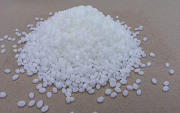
Polybutylene succinate (PBS) is the biodegradable plastic that decomposes into water and carbon dioxide with the microorganism under the soil. PBS has a high heat resistance among the general biodegradablility resin, and PBS has high compatibility with a fiber. Using these goodness, it's possible to achieve the performance which can't be shown by itself as the compound with other resin and material.duct life cycle.
DIAPOL™-WMB is a composite material (wet masterbatch) produced by acid coagulation of SBR latex, carbon black and water slurry in an ultradispersion process. It is widely applied as a raw material for industrial products; water seals and gaskets; and tires and belts.
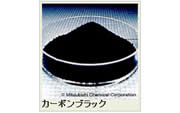
MITSUBISHI™ Carbon Black is a black pigment that has been used in a wide range of fields such as newspaper ink, printing ink, colored resin, paint, toner, colored paper, India ink, and ceramics.
Various grades of carbon blacks are available ranging from all- purpose grade to high-grade. In addition, our line of products includes industrial and environmentally-friendly carbon blacks.
- Carbon Black Association Handbook 3rd edition (Ref. 1)
- Carbon Black Association Annual Report No.75(2025)(Ref. 2)
Acrylic Sheet, SHINKOLITE™
[Close]
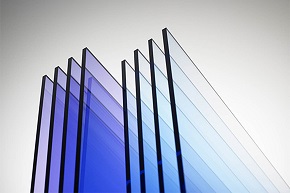
SHINKOLITE™ is the registered trade name of Mitsubishi Chemical's continuous cast acrylic sheet. Known as acrylic resin, this material has excellent weather resistance, stainability, and processability properties, and so is used in many applications such as signage, display, large water tanks, LCDs, and light guide plates. We will continue to leverage these properties and develop new products such as the flame-retardant and impact-resistant grades of SHINKOLITE. It is our goal to provide environmentally friendly products that make society safer and help people to have more comfortable and prosperous lives.
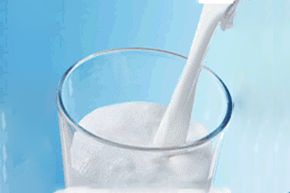
- Emulsion Type Resin (HX,LX,NT series)
-
Emulsion type resin is a water-based resin produced by emulsion polymerization. Our product line-up includes acrylic resins, acrylic-silicone resins, acrylic-urethane resins, acrylic-olefin resins, and organic-inorganic hybrid resins, which meets customers' requirements in various applications, mainly for paints.

- Acrylic Pressure Sensitive Adhesives (PSA)
―To Create New Value for Your Needs -
COPONYL is pressure sensitive adhesive(PSA) resin made mainly from acrylic acid ester using such solvents as ethyl acetate and toluene. The demand for PSA is increasing and expanding: they are now used in a wide range of applications including labels, single/double-sided tapes, foams, and electronic applications such as protective masking films.
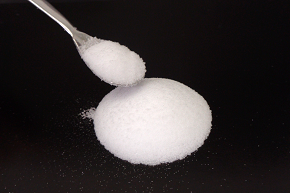
Acrylic Beads Resin
Acrylic beads resin is a solid bead-shaped methacrylic resin produced by suspension polymerization. Being solid and non-hazardous, customers can choose their own solvents, and it is easy to transport and store. We have manufacturing sites and sales networks around the world, enabling us to supply globally. We provide free samples from 500g for customers' initial study.
Acrylic Resins for Coating
[Close]

- We maximizes the potential of acrylic resin as a coating material
-
Based on the basic features of acrylic resin such as "transparency" and "high weather resistance," Mitsubishi Chemical contributes to solving customers' problems with its abundant product lineup and prompt and comprehensive customer service.
Utilizing our own methacrylate monomers, we produce and sell globally competitive and stable quality products.
Our resins are being used in a wide range of applications such as paints, inks, and adhesives.
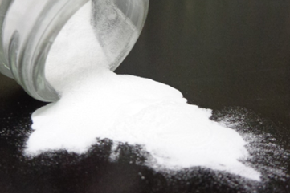
Acrylic Powder Resin
Acrylic powder resin is a fine powder resin made by spray-drying acrylic resin emulsion on particles. Core/shell type structural design is possible, and we are developing products that can demonstrate their characteristics in various applications. It shows good solubility in various solvents and liquid resins.
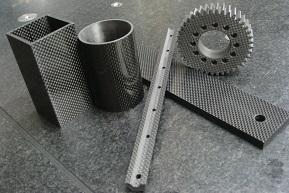
Carbon fiber composite materials, also known as carbon fiber reinforced plastics (CFRP), are composite materials made of carbon fibers and resin (mainly epoxy resin).
As light, strong, and hard materials, they are used in wide range of applications such as sporting goods, industrial, aircraft and automobile components. By selecting suitable resin, it is possible to add features like heat resistance, impact resistance, and flame retardant, and thus provide superior characteristics not found in conventional metals and ceramics to enable a reduction in the weight of parts, give freer design.
Carbon Fiber Pellets
[Close]
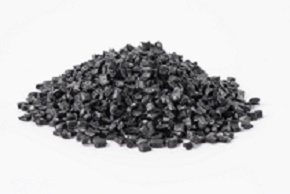
Carbon fiber pellets are thermoplastic molding materials created by blending carbon fiber with various resins to achieve performance that is superior to conventional reinforced resins. Advanced physical properties can be achieved by combining different base resins and carbon fibers, according to the specific application.
Carbon Fiber FMC (CF-SMC)
[Close]
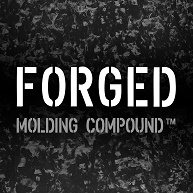
Carbon Fiber FMC (CF-SMC) is a sheet-type intermediate material made of cut high-strength carbon fiber impregnated with thermosetting resin. This material can be press molded, substantially reducing molding time compared to conventional autoclave or oven molding.
In addition, compared with carbon fiber intermediates of Continuous fibers, the random arrangement of Short fibers ensures fluidity and makes it possible to mold intricately shaped parts like those with ribs and bosses.
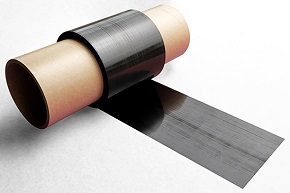
Under Development
Kyron™ ULTRA is a new sheet-like intermediate material developed by Mitsubishi Chemical, in which carbon fibers are impregnated with engineering plastics. It is a high performing carbon fiber composite material in the form of a UD (Uni-Directional) prepreg with carbon fiber in one direction.
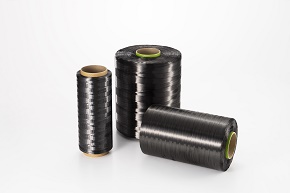
Carbon fiber is a high-strength and high-elastic modulus material, yet its specific gravity is only one-fourth that of iron. It, therefore, enables high strength, high rigidity, and weight-saving in a wide variety of applications.
Carbon fiber tow, made of bundles of untwisted filaments, is the essential material in our carbon fiber product line.
Carbon Fiber Fabrics
[Close]
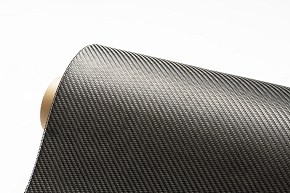
Carbon fiber fabrics have excellent drape properties which make them ideal for 3D shape applications. Due to the outstanding design possibilities they offer, carbon fabrics are also in high demand for applications that require visual appeal. As well as their design potential, carbon fabric materials offer excellent layup efficiency. You can layup a single ply in two directions.
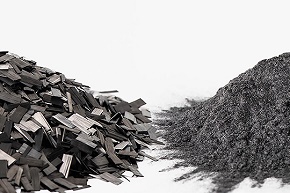
Carbon Chopped Fiber is a product made by chopping carbon fiber tow.
Carbon Milled Fiber is a product made by grinding milling chopped fiber into a powder (milled) form.
Chopped fiber is typically around 3 to 6 mm long, while milled fiber is typically less than 200 µm long. Both of these materials are used to enhance the physical properties of thermoplastic resins and rubbers, and to increase electrical and thermal conductivity.
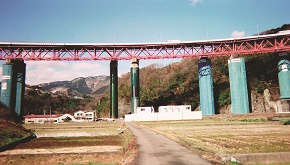
Compared with conventional steel plate or concrete-jacketed reinforcements, REPLARK simplifies construction and shortens construction period by eliminating the need for heavy machinery. For its high strength, lightweight, high durability, and excellent workability, REPLARK has earned an outstanding reputation for the repair and reinforcement of bridge piers, floorboards, columns, chimneys, and for other structural applications.
e-Plate/Leadline: This repair and reinforcement material enables reinforcement by simply attaching or embedding prefabricated carbon fiber reinforced plastics (CFRP), without the need for resin impregnation or for layering the required amount of reinforcement, as in the case of repair and reinforcement using carbon fiber sheets, thereby reducing construction time and improving construction quality.
Epoxy Resin, jER™
[Close]
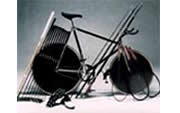
Regarding the jER™ (formerly Epikote™ *) epoxy resin, Mitsubishi Chemical is prepared to support our customers' needs quickly and flexibly. Our production is extremely fast because we have accumulated many years of research with epoxy products. Our manufacturing, sales, research, and development are tightly integrated to enable rapid response to the challenges our customers face. (*Epikote™ is a trademark of Hexion Inc. )
jERCURE™ curing agents for epoxy resins are an abundant set of curing agents that cover the full range from low to high curing temperature with functional groups ranging from amine, mercaptan, and phenol to Lewis acid complex compounds. A curing agent can be chosen from this set to fit the application. There are water-based curing agents for water-based epoxy resins, too.
Diluent(reactive), YED
[Close]
YED is reactive diluents for an epoxy resin that provides low viscosity without compromising the resin's special characteristics.
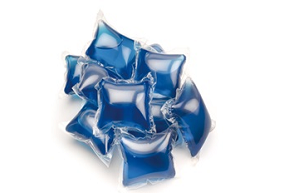
Water-soluble films developed by a specialist in chemical materials
HI-SELON™ is a water-soluble film made from polyvinyl alcohol.
With its excellent heat-sealing property and printability, HI-SELON™ is ideal for use as a packaging materials, but it also provides many other advantages, including high solvent resistance and barrier performance, which are used as materials for packaging of liquid detergent capsules.
Heat-Shrinkable Tube, HISHITUBE™
[Close]
TREXPRENE™ TPV (Thermoplastic Vulcanizate) is a heat stabilized, vulcanized PP / EPDM product. Globally available for a wide range of applications and approved to a variety of Automotive Specifications.
TEFABLOC™ is versatile family of thermoplastic elastomers (TPE). Applies to most of the environments and plastic converting processes.
TEFABLOC™ incorporates several technologies including TPE-S, TPO and TPE-E. Among the large scale of possible properties, some of them are also boosted in process by reactor or dynamic cross-linking.The accurate combination of features leads to tightly satisfy application specifications even the most demanding ones.
VINIKA™ is vinyl based, soft and rigid formulations designed for a wide variety of applications. Fine-tuned properties such as hardness, heat and impact resistance, colour and much more.
Sunprene™ is high performance flexible PVC-P compounds for demanding environments with outstanding aesthetics.
Soarlite is the trade name of ethylene-vinyl alcohol copolymer for injection molding application as engineering plastics.
Soaresin™
[Close]
Soaresin™ is used as a stabilizer or purging agent for extrusion.
Synthetic Paper , YUPO™
[Close]

"YUPO" is a synthetic paper made from polypropylene resin as its primary material. It offers extraordinary beauty, strength and flexibility. YUPO combines the advantages of both paper and plastic film, and thanks to its unique qualities, it is used widely in several fields, including the commercial printing, packaging and communication paper.
Terephthalate Plasticizer
[Close]
Phthalate Plasticizers
[Close]
Adipate Plasticizer
[Close]
Other Plasticizers
[Close]
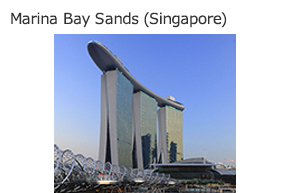
ALPOLIC is Aluminum Composite Material (ACM) composed of two sheets of aluminum and the thermoplastic core.
ALPOLIC has been global leading ACM since 1970s and has been used worldwide in more than 130 countries.
We have a variety of product lineups with design and function using different types of materials on surface and core materials
including ALPOLIC A1 which passed European fire classification A1 as the first ACM in the world, ALPOLIC/fr series which passed fire regulations around the world, and ALPOLIC/fr SCM with stainless steel on its surface.
For the details of products, visit ALPOLIC dedicated website.
Carbon fiber fabric, Replark™
[Close]
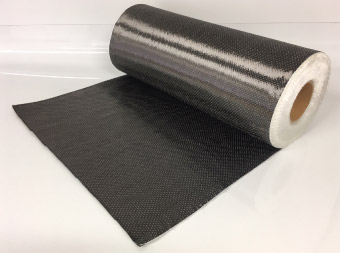
Structural Repair and Strengthening Carbon Fiber Fabric
- Carbon fiber boasts many advantageous features:
- It has a specific gravity just 1/4 that of iron, yet approximately 10 times the strength of steel, and it is highly chemically stable, making it resistant to salt damage.
Replark™ is a repair and reinforcement material made of unidirectional carbon fiber for steel and concrete structures. As a fabric, Replark™ can be applied to structures of various shapes and offers excellent workability.
The grade of Replark™ made with PAN-based carbon fibers can be used to enhance the load bearing capacity of such structures as bridge columns, while the high-elastic-modulus grade made with pitch-based carbon fibers can greatly reduce rebar stress.
- Product Finder
-

